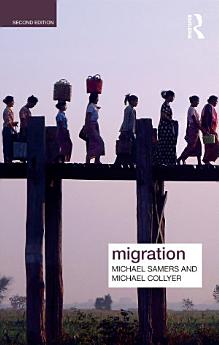Migration: Edition 2
អំពីសៀវភៅអេឡិចត្រូនិកនេះ
Now in its second edition, Migration remains the only text in more than a decade that emphasizes how geographical or spatial concepts can be used critically to understand migration. The multi-disciplinary text draws on insights from human geography, political science, social anthropology, sociology, and to a lesser extent economics. All of the chapters focus on key terms, theories, concepts, and issues concerning migration and immigration. The book argues that in the context of migration, two opposing ‘spatial positions’ have emerged in the wake of the critique of ‘methodological nationalism’. On one hand is the significance of ‘transnationalism’, and on the other, the importance of ‘sub-national’ or local processes. Both require more nuance and integration, while many of the concepts and theories which have thus far neglected space or have not been ‘treated’ spatially, need to be re-written with space in mind. Pedagogically the text combines a carefully defined structure, accessible language, boxes that explore case studies of migrant-related experiences in particular places, annotated suggestions for further reading, useful websites and relevant films and summary questions for student learning at the end of each chapter.
Migration provides a critical, multi-disciplinary, advanced, and theoretically informed introduction to migration and immigration. Revised and updated with new material, new maps and illustrations and an accompanying website (https://migration2ndedition.wordpress.com/), it continues to be aimed at advanced undergraduates and Masters-level graduate students undertaking courses on migration and immigration.
អំពីអ្នកនិពន្ធ
Michael Samers is Associate Professor of Geography at the University of Kentucky, USA. His research interests include the urban and economic dimensions of migration, as well as international finance. He is the co-author with Noel Castree, Neil Coe, and Kevin Ward of Spaces of Work: Global Capitalism and Geographies of Labour.
Michael Collyer is Professor of Geography at the University of Sussex, UK and has held visiting positions at universities in Egypt, Morocco, New Zealand, Sri Lanka, and the USA. He is primarily a political geographer with research interests in the politics of mobility. He is editor of Emigration Nations: Policies and Ideologies of Emigrant Engagement.







